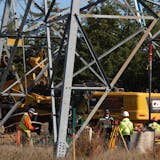One day last summer, Scott Wolter was moved to visit the gravesite of Newton Winchell, a prominent geologist in Minnesota history. Winchell is buried at Lakewood Cemetery in Minneapolis.
Wolter, a forensic geologist, admires the man, and he's been studying the controversial Kensington runestone, as Winchell did in the early part of the 20th century.
As the story goes, Swedish farmer Olof Ohman came across the peculiar stone slab on his farm in 1898. Cryptic markings and the date, 1362, characterize the stone, which is exhibited at the Runestone Museum in Alexandria, Minn.
Like Winchell, Wolter, who was hired by the museum in 2000 to assess the runestone's age, encountered quite a bit of pushback when he deemed it a genuine article.
Wolter, who lives in Chanhassen, has continued to delve into the artifact. That day at the cemetery, as if Winchell were there in the flesh, "I told him, 'We're going to finish the job you started,' " he said.
It's just one of many mysteries that Wolter is digging into for his TV show, "America Unearthed" on the History Channel, or H2. The show recently aired its second season. Right now, Wolter and the all-Minnesotan crew from Eden Prairie-based Committee Films are in the middle of shooting a third season.
The show has taken Wolter all over the globe. Locally, he's investigated giant bones that the show said may hint of the Vikings' presence in Minnesota; the Great Lakes copper heist, and what some believe might be Aztec pyramids at the bottom of a Wisconsin lake.
For Wolter, these types of investigations represent an "opportunity to get the history of the country corrected … that doesn't come along very often."


